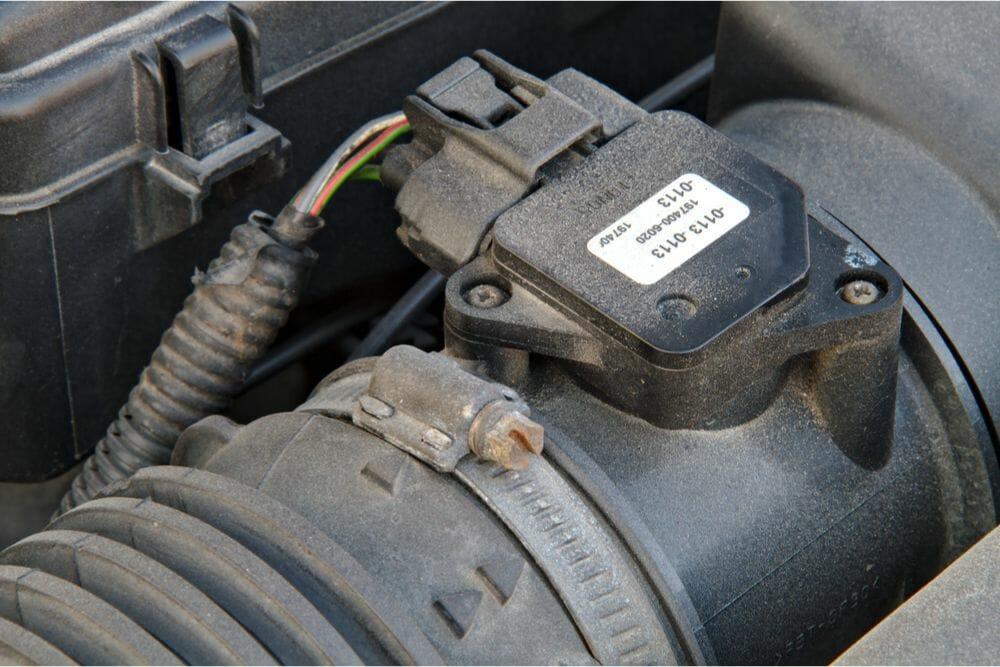Updated on March 29, 2023
Have you ever encountered an error message related to an open loop fault and felt confused as to what’s the issue? An open loop (OL) fault is a common electrical problem that occurs when the system fails to complete its intended circuit. In this blog post, we’ll explain what exactly an OL fault is, what causes it, and how to fix it.
An open loop (OL) fault is a common problem in electrical systems that occurs when the system fails to close its intended circuit due to a break or interruption somewhere along the way. This can be caused by various factors, including physical damage, faulty sensors, loose connections, or incorrect wiring. When this happens, the system will display an error code or message indicating an OL fault in the system.
What Is an Open Loop Fault?

An open-loop fault occurs when the engine control module (ECM) does not switch from an open-loop state to a closed-loop state as the car warms up. When the engine is cold, the ECM relies on data from various sensors such as the Engine coolant temperature sensor (ECT), Mass airflow sensor (MAF), and Manifold absolute pressure (MAP) sensor to determine how much fuel should be injected into the engine for optimal performance.
Once the engine has warmed up, and oxygen sensors are activated, the ECM should then switch to relying on these sensors for Air Fuel Ratio readings in order to keep the car running properly. If this switch does not occur, then the car will continue running in “open loop” mode and inject too much fuel into the engine, which results in poor performance.
The most common symptom of an OL fault is a warning light on your dashboard that indicates that something is wrong with the electrical system. Other symptoms include engine power loss, intermittent power surges or drops, and reduced fuel efficiency. These are all signs that something is wrong with your electrical system and needs to be addressed as soon as possible.
How to Fix an Open Loop Fault

If your car is not switching from an open loop to a closed loop after all of its sensors have been heated up, then you may be dealing with an open-loop fault. Unfortunately, diagnosing and fixing an open loop fault can be a tricky process since there are many potential causes for this issue, such as faulty wiring harnesses or bad oxygen sensors.
The best way to find out what is causing your open-loop fault is by having a professional mechanic perform a diagnostic test on your vehicle. Once they have identified the cause of your issue, they will be able to recommend the necessary repairs or replacements needed in order to fix it.
But if you truly wish to do the diagnostics and repairs on your own, read on.
Open Loop Fault Causes

There are several common causes of open loop faults:
1. Faulty Wiring
Wires can become worn or damaged due to age or improper installation, leading to an open loop fault. Poor connections may also interrupt the current flow within a circuit or system.
2. Poor Insulation
Insulation on wiring can also wear down over time leading to short circuits, which create an open-loop fault situation.
3. Faulty O2 Sensor
Probably the most common cause of an open loop fault is a faulty oxygen sensor. This sensor monitors the air-fuel mixture in your engine, and if it fails, the ECM will not be able to adjust the fuel injection amount correctly, leading to an OL fault.
The most likely case is that the O2 sensor doesn’tdoesn’t stay hot enough to keep functioning. Therefore it shuts off and doesn’tdoesn’t acquire the necessary data from the exhaust to adjust the fuel mixture as necessary.
4. Faulty Mass Air Flow (MAF) Sensor
The MAF sensor measures the amount of air entering the engine and needs to be functioning correctly in order for the ECM to adjust fuel injection appropriately. If this sensor is faulty or contaminated, then it may cause an open loop fault.
5. Faulty Engine Coolant Temperature (ECT) Sensor
The ECT sensor monitors the temperature of the engine coolant and sends a signal back to the ECM. If this sensor is faulty, it may cause an OL fault.
6. Overheating
Components such as resistors, capacitors, and transistors can generate too much heat resulting in higher temperatures than usual which can then cause an open-loop fault condition.
7. Poor Grounding
Grounding is essential for the proper operation of any electrical system as it helps protect against dangerous shocks and surges that could otherwise occur if there were no ground connections present at all times. Poor grounding can lead to faulty current paths being created, which results in an open-loop fault situation.
8. Defective Components
Defective components such as semiconductors can cause poor connections, which prevent the proper flow of current through the circuit resulting in an open-loop fault condition occurring as well.
9. Incorrect Voltage Levels
Voltage levels that are either too high or too low will both impact the flow of current within a circuit causing it not to follow its intended path, thus leading to an open-loop fault condition occurring as well.
10. Faulty ECM
Lastly, a faulty engine control module can also cause an open loop fault. The ECM is responsible for managing all of the sensors and other components in your vehicle’svehicle’s electrical system, and if it fails, it won’twon’t be able to interpret the data correctly.
As you can see, there are plenty of potential causes for an open-loop fault, and diagnosing the cause can be a bit tricky. It is always best to have a professional mechanic handle it, but if you choose to do it yourself, then make sure you know what you are doing, as mistakes could cost you more money and time in the long run.
How Open Loop Systems Work
An open loop system is the simplest type of engine management system. It uses sensors to measure air temperature, throttle position, and other variables, then adjusts its settings accordingly. The basics are simple—as the environment changes (temperature, humidity, pressure), the sensor readings change too.
This information is sent to the ECU (engine control unit), which can then make necessary adjustments to keep the engine running smoothly and safely. The only major downside of an open loop system is that it doesn’tdoesn’t take into account any changes in exhaust emissions or fuel economy over time—the ECU will always rely on its initial settings no matter how much time has passed since those settings were first applied.
How Closed Loop Systems Work
A closed loop system goes one step further than an open loop system by incorporating feedback from exhaust gas recirculation (EGR) systems into its calculations for calculating fuel mixture for optimum performance and efficiency.
This means that as environmental conditions change, so does the EGR reading; this data is incorporated into the ECU’sECU’s calculations for determining fuel mixture and other vital operating parameters.
As such, this type of engine management system offers far greater flexibility than an open loop system—it allows for more precise monitoring of combustion processes and can help improve both fuel efficiency and emissions levels over time.
Additionally, closed-loop systems use oxygen sensors in their exhaust pipes to monitor emissions levels; this ensures that your vehicle meets local emissions standards at all times without sacrificing performance or reliability.
How to Replace an Oxygen (O2) Sensor

If you suspect your O2 sensor is causing an open loop fault and need to replace it, here are the steps to do so:
- Disconnect the negative cable of your car’s battery.
- The next step is to jack the vehicle up so you can access the engine undertray.
- You’llYou’ll see a bunch of rivets and screws, and you’ll need to remove each of them in order to take off the tray.
- Make sure to take note of how the undertray “fits” with the subframe so you can easily slide and lock it into place when putting it back on.
- After taking out the tray, you’ll find that the oxygen sensor is now exposed. It has a similar shape to spark plugs and can be found attached to the exhaust pipe.
- To remove the component from its housing, unplug its wire first and then unfasten it with a split-type deep socket.
- Next, install your new oxygen sensor by applying anti-seize grease to its threads before screwing and tightening it into place.
- Don’tDon’t forget to plug in both ends of the wire for a complete connection.
- Lastly, reattach your engine undertray.
An O2 sensor should be replaced every 70 000 thousand miles or so. If you choose that a mechanic does the job, you can count on paying about $300 to $500.
Click here to learn more about the reasons why an O2 sensor might fail in the first place.
How to Replace a MAF Sensor

- The first step is locating the MAF sensor in your car. It will usually be located on or near the air intake pipe or air filter housing. Refer to your owner’s owner’s manual or an online guide for specific instructions on how to locate it.
- Once you have found it, disconnect the electrical connector and loosen any mounting bolts that secure the sensor in place.
- Then carefully remove the old MAF sensor from its mounting bracket.
- With the old MAF sensor out of the way, you are ready to install the new one. Start by cleaning off any debris from where you plan to mount it using compressed air or a soft cloth dampened with some rubbing alcohol (do not use anything abrasive).
- Then attach the new MAF sensor securely into place using any bolts or clamps that were removed earlier. Make sure all connections are tight before moving on to the next step.
- The last step is connecting back up the electrical harness you disconnected earlier when removing the old MAF sensor. Reconnecting this harness should be simple, slide the connector back into place until it clicks.
MAF sensors don’t need to be replaced often; most likely, they will last at least ten years. A mechanic may charge you around $200-$300, depending on the make and model of your car.
Conclusion
An open loop fault can cause serious issues for cars if it isn’tisn’t fixed quickly since it affects how well their engines run. While diagnosing and fixing an open loop fault can be difficult due to its many potential causes, having a professional mechanic perform a diagnostic test on your vehicle is usually enough to identify what needs repair or replacement in order for you to fix it.
Here are some articles that you might enjoy:
How to Open a Hyundai Sonata Trunk Without a Key?
How to Open a Seat Belt Buckle Cover
What Happens If You Disconnect the Throttle Position Sensor?
Ford Starting System Fault: Causes How to Fix

